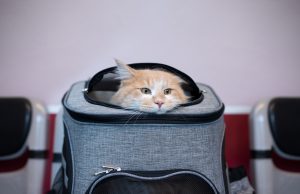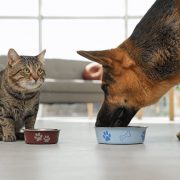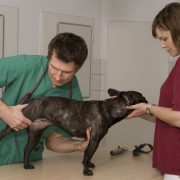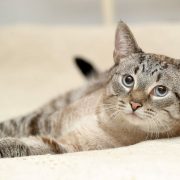Happy cats: stress in cats and their carers associated with outpatient visits to the clinic
Happy cats: stress in cats and their carers associated with outpatient visits to the clinic

Free access
In our edition of: Feb 2023
In our categories of: small animals
our summary:
Caney, S.M.A. et al. (2022) Happy cats: stress in cats and their carers associated with outpatient visits to the clinic. Journal of Feline Medicine and Surgery, 24 (12) pp. e551-e557.
The aim of this survey study was to explore owners’ experiences of stress, both for themselves and their cat, during visits to the veterinary clinic, and to assess owners’ perceptions of the facilities and resources within the clinic to reduce stress in cats.
The survey collected basic demographic data, information on the owners’ experience of taking their cat to a vet clinic on their most recent visit, as well as their general experience of visits over the last three years, and the owners’ awareness of measures taken within the clinic to reduce stress and the Cat Friendly Clinic (CFC) scheme.
The online survey, which ran for three months from the end of March 2020, was emailed to cat owners on the Vet Professionals database and promoted on social media platforms and by organisations providing resources on cat care. As the launch of the survey coincided with the restrictions in place due to the COVID-19 pandemic, which may have affected owners’ most recent experience at the veterinary clinic, only responses about the owner’s experience from the previous three years (pre-COVID times) were included in the study.
A total of 277 responses were included in the analysis, 94.9% (263/277) were cat owners and 71.1% (197/277) were from the UK. Putting the cat in the carrier and travelling to the clinic were viewed as more stressful for the cat than the owner overall. The time spent in the waiting room and the presence of other animals were perceived as the most stressful aspects of the waiting room experience. Just over half of owners (141/276) usually waited in a shared waiting room, a further third (85/276) waited in a section reserved for cats, and 27/276 waited in a cat-only room with a door separating it from the general waiting area.
The removal of the cat from the carrier was one of the more stressful aspects of the consultation, with about a third of owners reporting having witnessed their cat being scruffed during the consultation. Almost all respondents (94.7%) said seeing their cat stressed had had an effect on them, with 31.3% saying witnessing stress in their cat had put them off visiting the veterinary clinic. However, empathy from all members of staff was rated highly by owners.
Two thirds of owners reported that their clinic’s waiting room was equipped with at least one resource to reduce cat stress. The resource most highly rated by owners in terms of reducing stress was a cat only waiting room. Less than half of respondents (110/247) had heard of the iCatCare programme or the CFC programme.
Limitations of the study include potential selection bias with respondents likely to be highly engaged and therefore not representative of all cat owners. Whilst respondents were asked to think about their experiences over the past three years the timing of the survey meant that the most recent visit to the clinic may have been during the COVID-19 pandemic when different procedures were in place, this more recent memory may have influenced the answers given.
This study reports on owner’s experience of stress for both themselves and their cats when visiting a veterinary clinic and provides some evidence of which stress management options are more highly valued by owners, with cat only waiting rooms viewed as the most effective measure. This will help veterinary practices as they consider their feline-friendly practice approach.
The following may also be of interest:
Rodan, I et al. (2022) 2022 AAFP/ISFM cat friendly veterinary interaction guidelines: Approach and handling techniques. Journal of Feline Medicine and Surgery, 24 (11), pp. 1093-1132. https://doi.org/10.1177/1098612X221128760
Taylor, S. et al (2022) 2022 ISFM/AAFP cat friendly veterinary environment guidelines. Journal of Feline Medicine and Surgery, 24 (11), pp. 1133-1163 https://doi.org/10.1177/1098612X221128763
Feilberg, E., Corridan, C.L. and Buckley, L.A. (2021) A cross-sectional survey of UK veterinary practices to determine prevalence of patient stress-reducing and welfare-enhancing approaches believed to be undertaken in companion animal practice. Journal of Veterinary Behavior, 43, pp. 14-23 https://doi.org/10.1016/j.jveb.2021.01.001.
An inFOCUS summary of this article is available
Claiming CPD for reading inFOCUS articles
Reading and reflecting on articles can count towards your CPD, and we have a template to help you with the process.
Image copyright attribute: nilsjacobi
Join the discussion
We encourage discussion on all material highlighted in each edition of inFOCUS. Use the button below to join the conversation on Twitter and include your comment in the feed for this issue.







Leave a Reply
Want to join the discussion?Feel free to contribute!